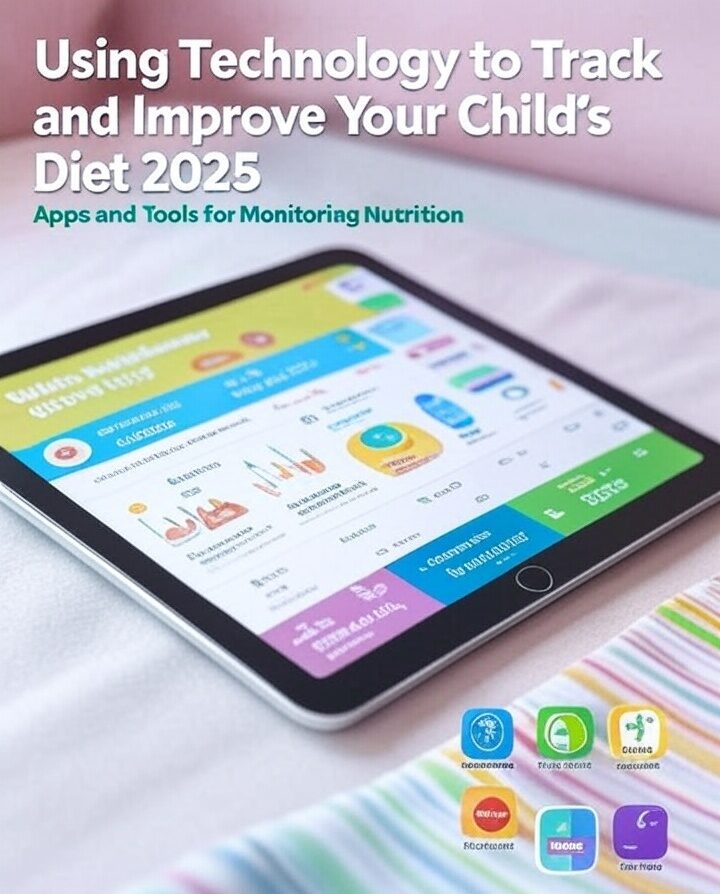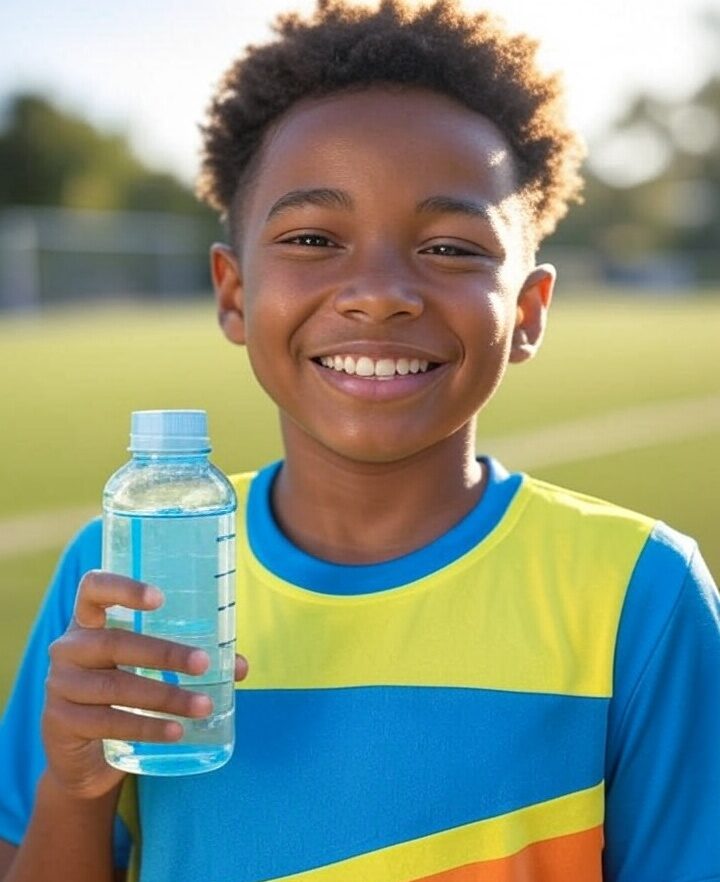Imagine catching your child sneaking sugary snacks, leaving you wondering if their diet is nutritious enough for their growing needs. In 2025, technology to track and improve your child’s diet empowers parents to ensure balanced nutrition with ease. A 2024 Nutrition Reviews study highlights that digital tools boost dietary awareness and improve health outcomes in children, making them vital for busy families juggling school, sports, and meals.
With trends like AI-powered food scanners and kid-friendly nutrition apps, tracking diets is more accessible than ever, especially for specialized needs like vegan or allergen-free diets (see our “Plant-Based Diets for Kids” and “Managing Food Allergies” posts). This guide delivers top apps, tools, and strategies to use technology to track and improve your child’s diet safely and effectively. From nutrient tracking to engaging kids in healthy habits, discover how technology to track and improve your child’s diet can transform mealtimes for the better.
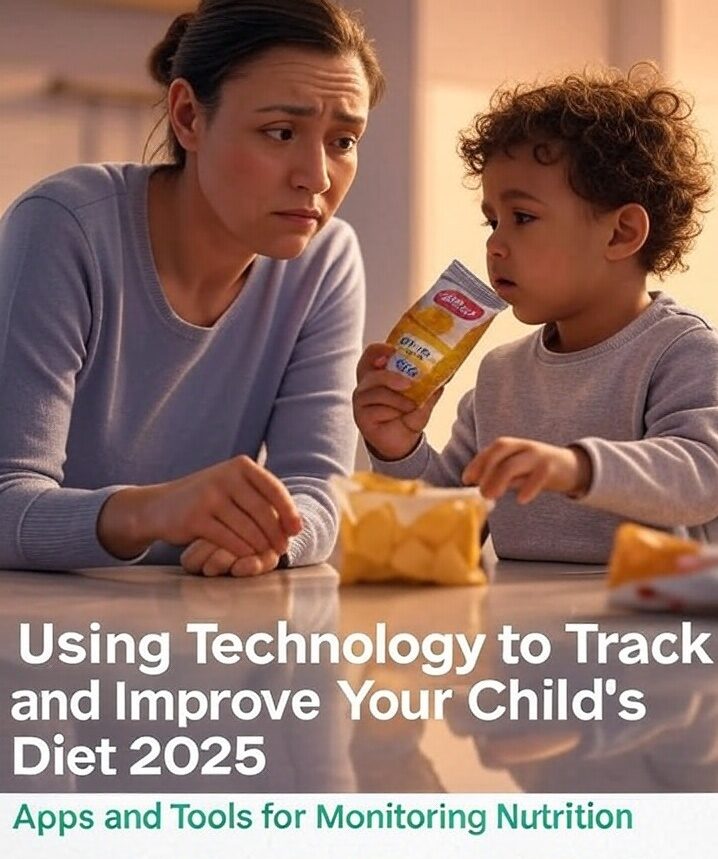
Section 1: Benefits of Using Technology for Kids’ Nutrition
Technology to track and improve your child’s diet offers powerful benefits for parents navigating the complexities of pediatric nutrition. Enhanced Awareness: Apps like Cronometer provide detailed nutrient breakdowns, helping parents spot gaps in iron, calcium, or other essentials, ensuring kids meet growth needs. Engagement: Gamified apps, such as This Is My Food, make nutrition fun, encouraging kids to explore healthy foods through interactive challenges (see our “Healthy Snacks for Toddlers” post for more engagement ideas).
Time-Saving: Barcode scanners and meal logs in apps like MyFitnessPal streamline tracking, saving busy parents time compared to manual journaling. Personalization: AI-driven tools tailor recommendations to dietary needs, like vegan or allergen-free diets, aligning with 2025 trends for customized nutrition. A 2022 study in Journal of Nutrition Education and Behavior found that nutrition apps improve dietary behaviors in families. By using technology to track and improve your child’s diet, parents gain tools to foster healthier eating habits effortlessly.
Section 2: Top Apps and Tools for Tracking Kids’ Diets
Technology to track and improve your child’s diet makes monitoring nutrition easier and more engaging. Here are five top apps and tools tailored for kids’ dietary needs in 2025:
- Cronometer: Tracks up to 84 nutrients, including vitamins and minerals, with verified data for precision. Ideal for monitoring supplements or deficiencies (see our “The Role of Supplements” post). Its barcode scanner and recipe logging make it a key technology to track and improve your child’s diet.
- MyFitnessPal: Logs calories and macronutrients from a database of over 18 million foods, with barcode scanning for packaged items. It’s user-friendly for teens and parents, supporting technology to track and improve your child’s diet with meal-saving features.
- Fooducate: Scans barcodes to grade foods (A to D) based on nutritional quality, highlighting sugars and additives. Perfect for grocery shopping, it educates kids on healthy choices, enhancing technology to track and improve your child’s diet.
- MyPlate: A USDA-backed app with a 2 million-food database, offering kid-friendly goal-setting and recipes. It syncs with fitness trackers, making it a structured technology to track and improve your child’s diet.
- This Is My Food: An interactive app using games to teach kids about nutrition. Its visual focus encourages engagement, supporting technology to track and improve your child’s diet through fun learning.
These tools empower parents and kids to monitor nutrition effectively, addressing specific needs like allergies or vegan diets with precision and ease.
Section 3: Challenges of Using Nutrition Apps
While technology to track and improve your child’s diet offers powerful tools, it comes with challenges that parents must navigate. Over-Reliance: Focusing too much on numbers, like calories or macros, can disrupt intuitive eating, especially for teens who need balanced habits for sports performance (see our “Nutritional Needs of Teen Athletes” post). Privacy Concerns: Some apps collect sensitive data, like dietary preferences or health details, raising security risks. Always review privacy policies to protect your child’s information. Inaccuracy: Non-local food databases may misrepresent nutrient content for regional foods, skewing tracking accuracy. For example, homemade meals may not align with app data.
Engagement: Kids may lose interest in non-gamified apps, reducing their effectiveness over time. Apps without interactive features struggle to keep young users motivated. Despite these hurdles, thoughtful use of technology to track and improve your child’s diet can ensure accurate, engaging, and secure nutrition monitoring with proper precautions. For more on digital tools for kids’ nutrition, visit the Academy of Nutrition and Dietetics’ resources: https://www.eatright.org/food/nutrition/nutrition-apps-and-technology.
Section 4: 5 Practical Strategies for Using Nutrition Apps
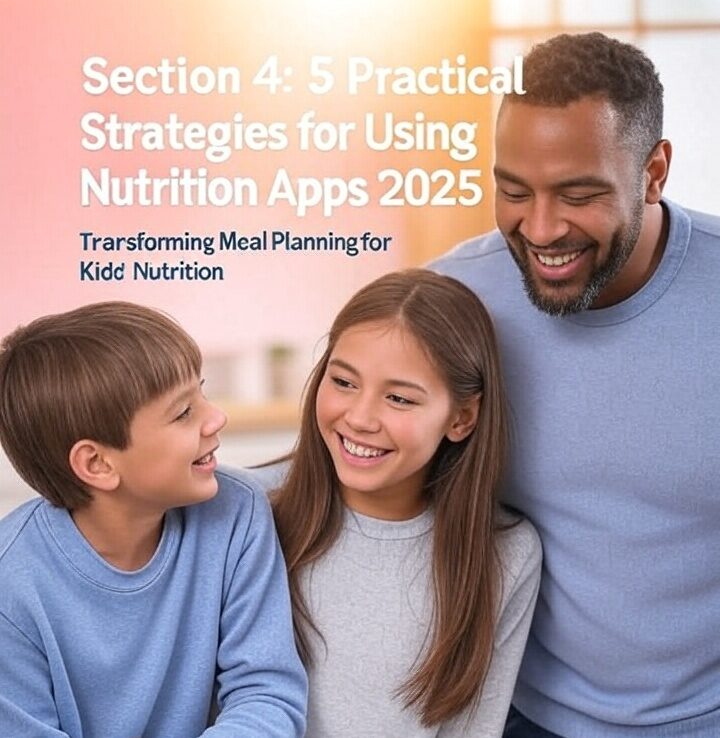
Leveraging technology to track and improve your child’s diet can transform meal planning with these five strategies for effective, kid-friendly use:
- Set Clear Goals: Focus on nutrient balance, like ensuring adequate iron or calcium, rather than just calories, to meet kids’ growth needs. Apps like MyPlate help set specific targets, making technology to track and improve your child’s diet purposeful.
- Involve Kids: Encourage kids to scan barcodes with Fooducate or play nutrition games in This Is My Food, fostering engagement and ownership (see our “Healthy Snacks for Toddlers” post for more kid-involvement tips). This makes technology to track and improve your child’s diet fun and educational.
- Choose Credible Apps: Opt for apps backed by dietitians or organizations like the USDA, such as MyPlate or Cronometer, to ensure accurate data and reliable recommendations for technology to track and improve your child’s diet.
- Combine with Education: Use apps to teach kids about food groups, like proteins or veggies, beyond mere tracking. Fooducate’s grading system helps kids learn what’s healthy, enhancing technology to track and improve your child’s diet.
- Monitor Usage: Review app data weekly with a pediatrician to ensure balance and avoid obsessive tracking, which can stress kids. Regular check-ins keep technology to track and improve your child’s diet aligned with health goals.
These strategies make nutrition apps effective, engaging, and safe, empowering families to optimize their child’s diet with confidence.
Section 5: Tips for Safe and Effective App Use
Using technology to track and improve your child’s diet safely ensures accurate nutrition monitoring while prioritizing health. Verify Sources: Choose apps with verified food databases, like Nutritionix-powered Cronometer or MyFitnessPal, to ensure reliable nutrient data for precise tracking. Limit Screen Time: Balance app use with real-world food experiences, like cooking together, to avoid over-reliance on digital tools and foster healthy eating habits. Check Privacy Policies: Review app privacy policies to protect your child’s data, especially for apps collecting dietary or health information, ensuring safe technology to track and improve your child’s diet.
Adapt Recipes: Modify app-suggested recipes, such as adding veggies or reducing sugar in MyPlate’s meal plans, to align with your child’s needs. Consult Professionals: Pair app use with dietitian advice to verify accuracy and tailor recommendations, maximizing the benefits of technology to track and improve your child’s diet. These tips ensure apps are used safely and effectively for your child’s nutrition.
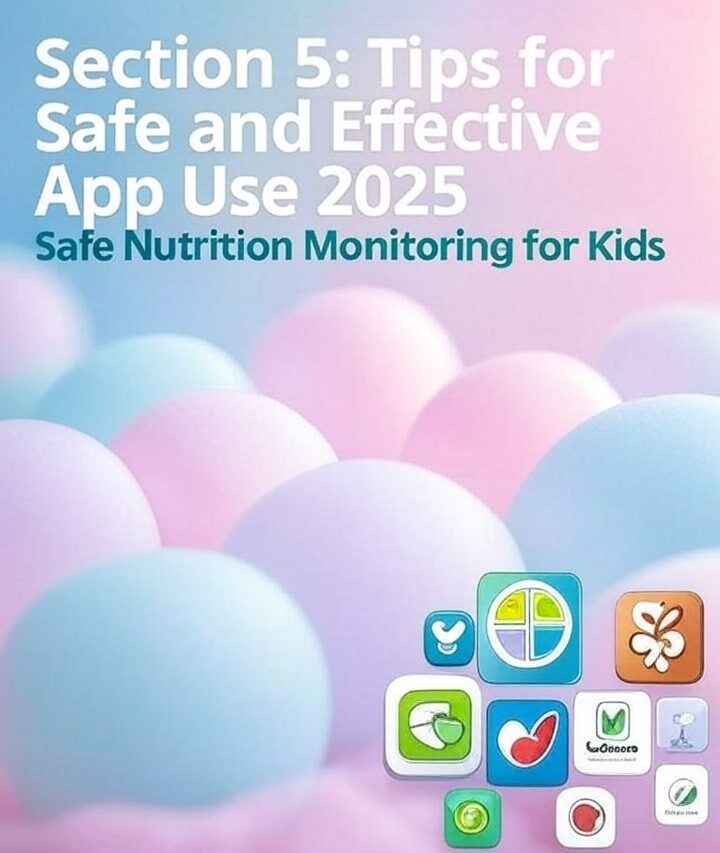
Conclusion
Technology to track and improve your child’s diet transforms nutrition management by enhancing awareness, engaging kids, and saving time, while careful use addresses challenges like over-reliance or privacy concerns. Apps like Cronometer and Fooducate empower parents to monitor nutrients, ensuring balanced diets for growth and health.
In 2025, AI food scanners and wearable integrations, like smartwatch-syncing apps, make tracking seamless and precise. Try an app like Fooducate this week to start optimizing your child’s diet, and consult a dietitian for tailored guidance. Explore our series for more, such as “Plant-Based Diets for Kids” for vegan tips or “The Role of Supplements” for nutrient support. Embrace technology to track and improve your child’s diet for healthier habits—what’s your favorite nutrition app? Share below
